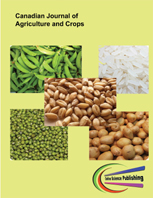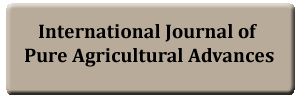The effect of sulfur-containing compounds and thiobacillus bacteria on corn plants under field soil and soil contaminated by heavy metals lead and zinc conditions
DOI:
https://doi.org/10.55284/cjac.v8i1.919Keywords:
Lead, Morphological, Physiological, Potassium sulfate, Sulfur, Thiobacillus and Zinc.Abstract
Investigating the effect of various sources of sulfurous compounds along with the inoculation of Thiobacillus bacteria on corn plants under stress conditions of lead and zinc metals, an experiment executed at zanjan uni researching green house. The treatments include elemental sulfur (0.75, 1.25 and 2 g/kg soil), sulfur with Thiobacillus bacteria (1, 2 and 3 g/kg soil) and potassium sulfate (0.5, 1 and 1.5 g/kg soil ). The results showed that the traits were significant in all applied treatments except proline. The amount of morphological traits and physiological traits increased in sulfur treatment with thiobacillus bacteria in field soil conditions and heavy metal stress compared to the control. But the properties of soluble sugars and proline decreased in this treatment. On the other hand, with the increase in the concentration of elemental sulfur and potassium sulfate treatments that caused stress in the plant. However, under stress conditions, the amount of absorption of lead and zinc in the root and aerial part of the plant increased to a critical and damaging level, but by applying of treatments, the amount of absorption and damage decreased. it can be concluded that elemental sulfur and potassium sulfate treatments by reducing the absorption of all elements required by the plant caused stress, but sulfur with bacteria treatment reduces the absorption of these heavy elements, and the bacteria in the soil provides the conditions for absorbing more water and nutrients through the roots and improves the growth of the plant.


